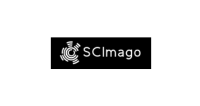FREQÜÊNCIA RESPIRATÓRIA E TEMPERATURA CLOACAL EM FRANGOS DE CORTE SUBMETIDOS À TEMPERATURA AMBIENTE CÍCLICA ELEVADA
DOI:
https://doi.org/10.5380/avs.v12i1.9227Palavras-chave:
parâmetros fisiológicos, estresse térmico, aves, ambiência, physiologic parameters, heat stress, birds, ambianceResumo
Este estudo objetivou verificar os efeitos da temperatura ambiente cíclica elevada sobre a
freqüência respiratória e temperatura cloacal em frangos de corte. Setenta pintos da linhagem Avian, machos
foram alojados em baterias de gaiolas de julho a agosto de 2004 e divididos em dois grupos. O primeiro foi
submetido diariamente, durante uma hora, à temperatura ambiente elevada do primeiro até o 42º dia de idade
(grupo ST). O segundo mantido em temperatura de conforto térmico (grupo TN). Analisou-se semanalmente a
freqüência respiratória e temperatura cloacal, de dez aves do grupo ST, antes e após o estresse por calor. No
grupo TN, estes parâmetros foram avaliados entre 12 e 13 horas. O delineamento foi feito em parcela
subdividida “Split-Plot” no tempo.Oefeito temperatura ambiente foi considerado parcela, enquanto que o efeito
idade, subparcela. Os dados foram analisados pela análise de variância e as médias comparadas pelo teste de
Tukey a 5%. As aves ST e TN apresentaram aumento da temperatura cloacal com a idade. No grupo TN, a
freqüência respiratória reduziu com a idade. As aves do ST tiveram aumento na freqüência respiratória e
temperatura cloacal depois do estresse pelo calor. Assim, a temperatura corporal aumenta com a idade do
frango, independentemente da temperatura ambiente, e a freqüência respiratória reduz com a idade para as
aves em termoneutralidade. Frangos de corte submetidos à temperatura ambiente cíclica elevada apresentam
aumento na freqüência respiratória e na temperatura cloacal.
Downloads
Publicado
Como Citar
Edição
Seção
Licença
Autores que publicam nesta revista concordam com os seguintes termos:
- Autores mantém os direitos autorais e concedem à revista o direito de primeira publicação, com o trabalho simultaneamente licenciado sob a Creative Commons - Atribuição 4.0 Internacional que permite o compartilhamento do trabalho com reconhecimento da autoria e publicação inicial nesta revista.
- Autores têm autorização para assumir contratos adicionais separadamente, para distribuição não-exclusiva da versão do trabalho publicada nesta revista (ex.: publicar em repositório institucional ou como capítulo de livro), com reconhecimento de autoria e publicação inicial nesta revista.
- Autores têm permissão e são estimulados a publicar e distribuir seu trabalho online (ex.: em repositórios institucionais ou na sua página pessoal) a qualquer ponto antes ou durante o processo editorial, já que isso pode gerar alterações produtivas, bem como aumentar o impacto e a citação do trabalho publicado.













